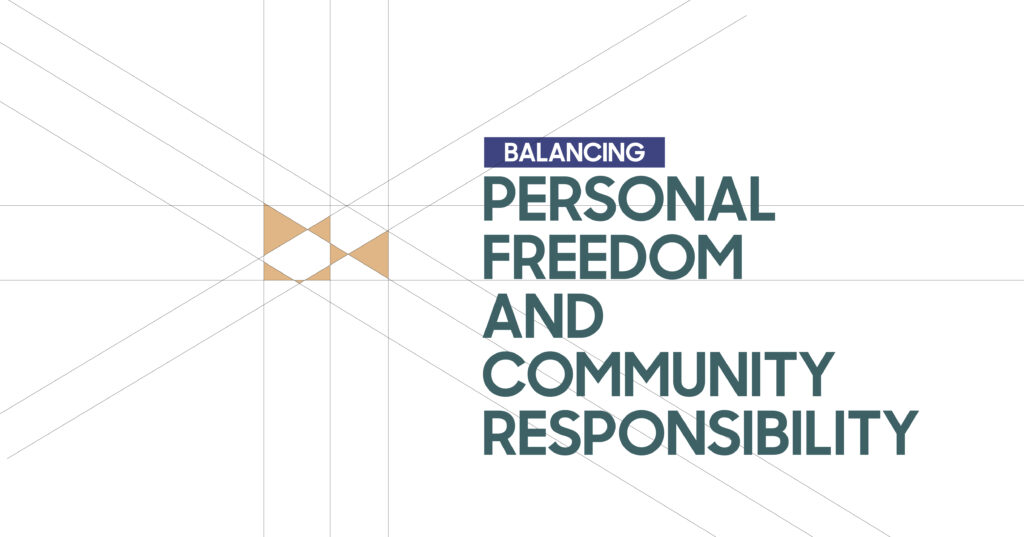The debate over individualism vs collectivism has become more relevant in modern society. At its core, individualism emphasizes personal freedom, self-reliance, and autonomy, while collectivism stresses the importance of group harmony, social responsibility, and community values. This balance between individual liberty and collective responsibility is at the heart of many cultural differences and societal structures. But how do these two opposing forces impact us in today’s world, especially when it comes to mental health and well-being?
As we explore the dynamics of individualism and collectivism, we’ll examine how cultural differences shape our views of personal freedom, group harmony, and responsibility, especially in the context of mental health. Understanding this balance is crucial for fostering healthy, supportive environments for individuals and communities.
Cultural Differences in Modern Society
In today’s globalized world, we are more connected than ever, but the values that drive us can differ dramatically. Cultural differences in individualism vs. collectivism are visible in everyday life, whether in how we approach relationships, work, or mental health. In individualistic societies, people are often seen as self-sufficient individuals who prioritize personal goals over group ones. In contrast, collectivist societies emphasize interdependence, where the community’s well-being usually precedes personal desires.
These differences have significant implications for mental health, especially in terms of how individuals seek treatment, interact with others, and deal with stressors. For example, while personal freedom might encourage someone to seek therapy independently in an individualistic culture, people in collectivist societies may turn to their community for support, emphasizing shared experiences.
Individualism and Personal Freedom
The Role of Self-Reliance in Individualistic Cultures
In individualistic cultures, self-reliance is a central value. People are encouraged to rely on their abilities, make decisions independently, and seek personal growth. This emphasis on independence can foster personal empowerment, but can also lead to isolation, especially when individuals face mental health struggles.

- Self-empowerment. In individualistic societies, mental health professionals encourage self-reflection and empowerment.
- Challenges. The pressure to be self-sufficient can hinder individuals from reaching out for help, potentially leading to untreated mental health issues.
Autonomy and Independence: Pillars of Individualistic Societies
Autonomy and independence are often essential for personal development in individualistic cultures. These concepts allow individuals to chart their path and prioritize their needs, making choices that best serve their growth.
However, these values can also create challenges when it comes to mental health. The stigma surrounding therapy or emotional struggles can be more pronounced in individualistic societies, where self-sufficiency is valued above all.
Collectivism and the Importance of Group Harmony
Community Values and Social Responsibility in Collectivist Cultures
In contrast to individualism, collectivism emphasizes the importance of community values and social responsibility. In collectivist cultures, people are encouraged to work together, share responsibilities, and prioritize the group’s well-being. The sense of belonging to a larger whole can provide a strong support system, but it can also pressure individuals to conform to societal expectations.
- Strong social support. Mental health is often viewed in the context of the community’s well-being, encouraging collective efforts to provide care.
- Challenges. The pressure to conform can sometimes lead to the neglect of individual mental health needs.
The Balance Between Community and Individual Needs
Achieving a balance between individual needs and community values is essential for maintaining mental health. In collectivist societies, while group harmony is valued, the individual’s mental health is sometimes overshadowed by the collective’s needs. Individuals need to seek support without feeling they are letting the group down.
Comparative Analysis: Individualism Versus Collectivism
Impact on Societal Structures and Relationships
The debate between individualism and collectivism profoundly influences societal structures. Individualistic societies emphasize personal rights and freedoms, creating a more competitive environment where individuals are responsible for their success. On the other hand, collectivist societies foster cooperation and interdependence, which can create strong community ties but may also lead to conflict if individual needs are overlooked.
| Aspect | Individualism | Collectivism |
| Focus | Personal goals, independence | Group goals, community well-being |
| Societal Structure | Competitive, self-reliant | Cooperative, interdependent |
| Mental Health | Encourages self-reliance, may hinder seeking help | Strong community support, potential pressure to conform |
Challenges in Bridging Cultural Differences
One of the significant challenges of navigating individualism vs collectivism lies in how these cultural frameworks interact in a globalized world. As societies become more interconnected, understanding these differences is crucial for fostering cooperation and reducing conflicts, particularly in multicultural settings.
Case Studies: Individualism and Collectivism in Action
Case Study 1: United States vs Japan – Diplomacy and Global Relations
The United States and Japan are prime examples of how individualism and collectivism influence diplomacy and international relations. The United States is an individualistic society where autonomy and personal freedoms are deeply valued, influencing its foreign policy decisions. In contrast, Japan, with its collectivist values, emphasizes harmony, cooperation, and mutual benefit in its diplomatic efforts.
- United States (Individualism)
The U.S. often advocates for autonomy and self-determination, pushing for policies prioritizing individual rights and freedoms, including international agreements centered on trade rights and political independence.
- Japan (Collectivism)
On the other hand, Japan stresses the importance of cooperation and maintaining group harmony. Japan’s diplomatic strategies often seek consensus and collaborative international relations, emphasizing regional stability over individual national interests.
Impact on International Diplomacy
- The United States may push for policies that protect its national autonomy, often creating tensions in multilateral agreements.
- By focusing on collaboration and mutual benefit, Japan tends to form strong alliances that prioritize collective security and trade benefits.
This fundamental difference between individualism and collectivism can sometimes lead to tensions, but it also fosters opportunities for dialogue and partnership. For example, despite their contrasting diplomatic approaches, the U.S. and Japan collaborate on various issues, including trade, technology, and environmental efforts.
Case Study 2: Health Policy – United States vs Scandinavian Countries
Health systems worldwide reveal the stark contrast between individualism and collectivism. The United States, an individualistic society, emphasizes personal responsibility for one’s health. This has led to a healthcare system based on private insurance and individual choice. In contrast, Scandinavian countries like Sweden and Denmark are rooted in collectivist values, where healthcare is universally provided and community well-being takes precedence.
- United States (Individualism)
The U.S. healthcare system primarily requires individuals to secure health insurance and access treatment. This often leads to disparities in healthcare access, with some individuals receiving excellent care while others, particularly in low-income communities, may struggle with inadequate services.
- Sweden and Denmark (Collectivism)
Scandinavian countries believe that universal health coverage ensures every citizen has access to healthcare, irrespective of their financial situation. This collectivist approach to health encourages community welfare, leading to better overall health outcomes.
Impact on Global Health
- The individualistic model in the U.S. creates a system in which people are responsible for their health outcomes, but it can lead to inequalities.
- The collectivist model in Scandinavian countries offers more equitable access, resulting in better public health outcomes and lower rates of preventable diseases.
This case highlights how cultural values of individualism vs collectivism directly impact the effectiveness and accessibility of health policies.
Case Study 3: Economic Policies – United States vs China
The economic policies of the United States and China offer an insightful comparison of how individualism vs collectivism shapes economic systems and global markets.
- United States (Individualism)
The U.S. is built on free-market capitalism, where competition, innovation, and personal ambition are key driving forces. Companies and individuals are incentivized to pursue profit and economic success through minimal governmental interference.
Example: Silicon Valley, an innovation hub, thrives in an individualistic environment that encourages risk-taking and an entrepreneurial spirit. Companies like Apple and Google are driven by individual visionaries who often disrupt industries for profit and progress.
- China (Collectivism)
In contrast, China’s state-driven economy reflects collectivist values, where the government actively directs economic activity. Policies focus on societal well-being and long-term national goals, such as technological dominance and social stability.
Example: The Chinese government has implemented state-owned enterprises (SOEs) and invests heavily in infrastructure to support society’s collective well-being. The government’s “Made in China 2025” initiative also elevates the country’s manufacturing and technological sectors, benefiting society.
Impact on Economic Policies
- Individualism (U.S.) encourages market-driven growth, focusing on individual wealth and competition, which fosters innovation and leads to economic inequalities.
- Collectivism (China) emphasizes national control and strategic development for the collective good, which can lead to more sustainable growth but limits individual economic freedoms.
This case demonstrates the tension between individualism and collectivism and how both models successfully created robust economies, albeit with different goals and outcomes.
| Area | Impact of Individualism | Impact of Collectivism |
| Diplomacy | Focus on autonomy and self-determination, national sovereignty | Emphasis on cooperation and mutual benefit, consensus-driven diplomacy |
| Global Health | Personal responsibility for health, leading to inequality and access issues | Universal health coverage, promoting community health, and equality |
| Economic Policies | Free-market economies, competition, and innovation-driven growth | Government-led development, collective economic strategies, and stable growth |
Learn More at Treat Mental Health California
At Treat Mental Health California, we work to harmonize these cultural values by providing comprehensive mental health services tailored to individual needs and collective well-being. We encourage individuals to seek support that aligns with their values through individual therapy or group support.
If you’re navigating the complex dynamics of individualism vs collectivism and struggling to find a healthy balance in your life, we are here to help.
Contact Treat Mental Health California today for personalized support.

FAQs
How do cultural differences influence personal freedom and group harmony in society?
Cultural differences shape how people view personal freedom and group harmony. Individualistic societies prioritize personal freedom, while collectivist cultures emphasize group harmony and social responsibility.
What role does self-reliance play in individualistic cultures compared to collectivist societies?
In individualistic cultures, self-reliance is a key value, and individuals are encouraged to solve problems independently. Group support is often preferred in collectivist societies, and individuals rely on community connections for solutions.
How are autonomy and independence viewed differently in individualistic and collectivist cultures?
Autonomy and independence are pillars of individualistic societies, where personal freedom is paramount. In collectivist cultures, these values are often secondary to group needs, with a stronger focus on cooperation and shared responsibilities.
What impact do community values and social responsibility have on collectivist societies?
Community values and social responsibility are central to collectivist cultures. They promote cooperation and mutual support, but can sometimes lead to pressure on individuals to conform to societal expectations.
How can cultural differences between individualism and collectivism affect global interactions and policies?
Cultural differences between individualism and collectivism can influence global interactions, with conflicts arising when cultural values collide. Understanding these differences is key to fostering international cooperation and effective policy-making.





